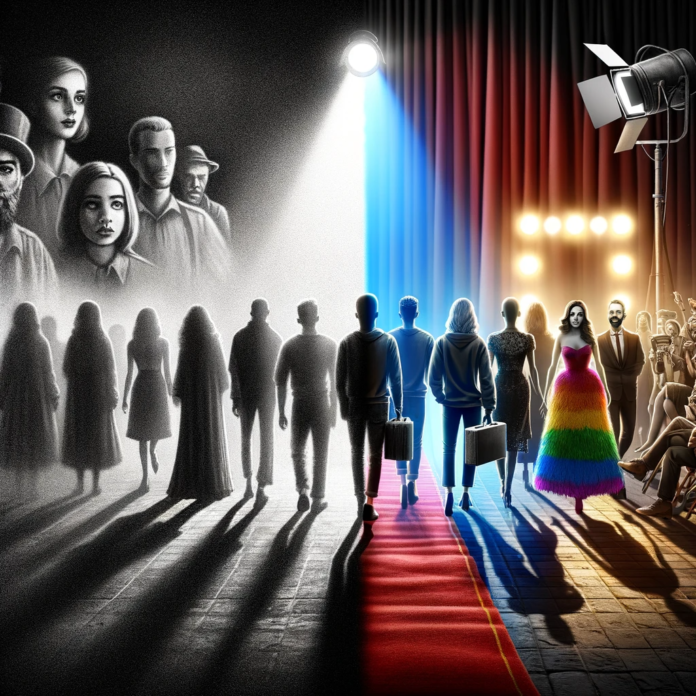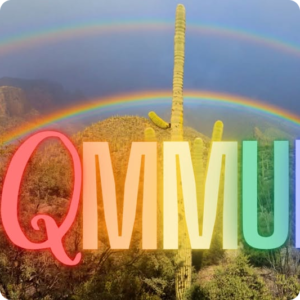2024 is shaping up to be a landmark year for LGBTQ+ representation in film, showcasing a diverse range of stories and characters across genres. From intimate dramas to grand musicals and even superhero blockbusters, the upcoming year promises to bring visibility and depth to LGBTQ+ narratives like never before.
Spotlight on Upcoming Films
- On Swift Horses: Set in the 1950s, this film explores a complex love triangle involving characters played by Daisy Edgar-Jones, Jacob Elordi, and Will Poulter, offering a nuanced look at relationships and identity during the post-Korean War era.
- My Old Ass: Starring Maisy Stella and Aubrey Plaza, this coming-of-age tale follows a queer 18-year-old’s whimsical journey of self-discovery, facilitated by a psychedelic encounter with her future self.
- Cuckoo: Featuring Hunter Schafer, Dan Stevens, and Jessica Henwick, this horror film delves into the eerie and unsettling experiences of a family at a deceptive resort, promising a thrilling exploration of identity and belonging.
The Dark Ages: Queer Coding and Villainous Stereotypes

In the early days of cinema, the Hays Code and discriminatory norms forced LGBTQ+ characters into the shadows, often depicting them as villains or figures of ridicule. Queer coding, a method where characters exhibit traits associated with LGBTQ+ identities without explicit acknowledgment, became prevalent. Films like “The Maltese Falcon” and “Rebecca” presented characters with subtle hints of queerness, often linking them to villainy or moral ambiguity.
Breaking Boundaries: The Slow Rise of Visibility
As societal attitudes began to shift, so did the representation of LGBTQ+ characters in media. The 1970s marked the beginning of some positive representation, albeit minimal and often fraught with stereotypes. Shows like “Ellen” in the 1990s broke significant ground by featuring Ellen DeGeneres as the first main character in a sitcom to come out as gay, marking a pivotal moment in LGBTQ+ visibility on television.
The New Millennium: Diversity and Complexity
The turn of the century brought a more diverse and complex portrayal of LGBTQ+ characters. The increase in visibility was partly quantified by GLAAD’s “Where Are We On TV” reports, showing a rise in LGBTQ+ characters from 10 recurring characters in 2005 to over 50 in 2017. This era also saw the rise of queer coding in a more positive light, with characters becoming icons within the LGBTQ+ community despite not being explicitly labeled as such.
“Will & Grace” stands as a beacon in the landscape of LGBTQ+ representation in mainstream media. Debuting in 1998, the show revolved around the dynamic between a gay man, Will, and his straight female best friend, Grace, alongside their friends Jack and Karen. Its portrayal of LGBTQ+ characters in a central, positive light was groundbreaking at the time. By weaving the complexities of LGBTQ+ lives into the fabric of its narrative, “Will & Grace” transcended stereotypes, offering audiences a glimpse into the nuanced, everyday experiences of the LGBTQ+ community.
This sitcom did more than entertain; it played a crucial role in challenging and changing societal perceptions, making significant strides toward inclusivity and acceptance. The show’s return in 2016 underscored its enduring relevance and continued to address contemporary LGBTQ+ issues, thereby cementing its legacy as a pivotal force in the ongoing journey toward greater representation on screen.
Today and Tomorrow: Embracing Authenticity and Intersectionality
The current landscape of LGBTQ+ representation in media is more inclusive and nuanced than ever before. The stories being told are diverse, spanning different genres, identities, and experiences. This shift towards authenticity and intersectionality in storytelling not only reflects the complexity of the LGBTQ+ community but also enriches the tapestry of media as a whole.
As we reflect on the vibrant tapestry of LGBTQ+ representation in film and television, it’s clear that we stand on the cusp of a new era. From the restrictive shadows of the Hays Code era to the groundbreaking narratives of shows like “Will & Grace,” the journey towards inclusive and multifaceted portrayals has been long and hard-fought. Today, the landscape of popular culture is increasingly welcoming, painting a promising picture of the future where LGBTQ+ stories are told with the depth, respect, and visibility they deserve.
This positive shift is a tribute to the relentless spirit of the countless advocates, activists, and allies who have championed LGBTQ+ rights and representation. Their unwavering commitment has not only paved the way for more authentic and diverse narratives but has also played a pivotal role in shaping a more accepting and understanding society. Here’s to a future where every story finds its place in the sun, and the narrative of acceptance and love continues to flourish!









